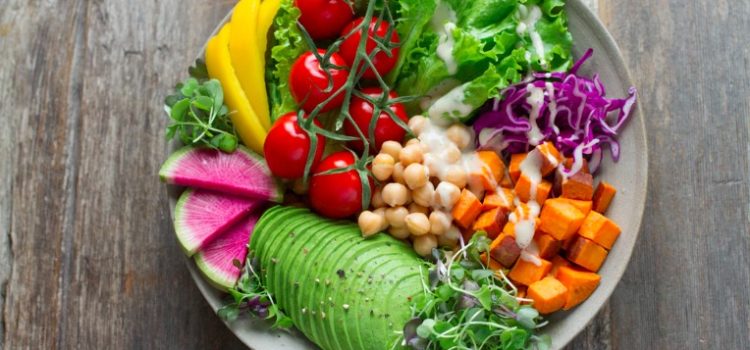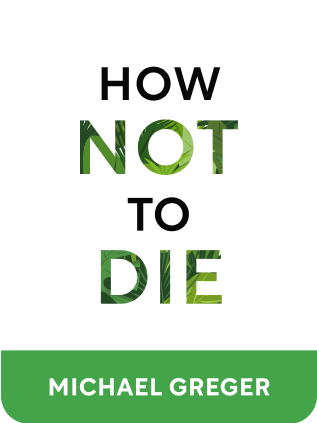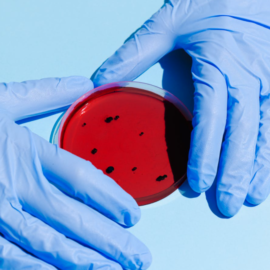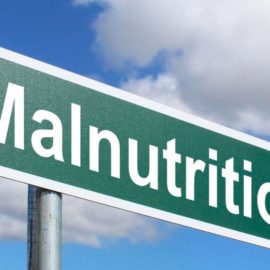

This article is an excerpt from the Shortform book guide to "How Not to Die" by Michael Greger. Shortform has the world's best summaries and analyses of books you should be reading.
Like this article? Sign up for a free trial here .
Do you want to ramp up your veggie intake? What are some of the healthiest vegetables you can eat?
It’s not a secret that vegetables are good for your health. Most veggies are low in calories but packed with nutritional goodness.
This article takes a look at some of the healthiest veggies you can eat including greens and cruciferous vegetables.
The Benefits of Vegetables
Studies show:
- Improved attractiveness.
- Carotenoids from yellow/red vegetables deposit in skin and make the rating of your face more attractive.
- Intake of green/yellow vegetables is associated with decreased facial wrinkling in Japanese women (controlling for age, smoking, BMI, and sun exposure).
Tomatoes
- Tomato is one of the healthiest veggies for keeping your blood clot-free—the yellow fluid surrounding seeds has anti-platelet compounds.
- Choose whole, crushed, or diced tomato products instead of tomato sauce or puree.
Mushrooms
- Ergothioneine is an antioxidant that works in the mitochondria.
- Our cells have a specific ergothioneine transporter; humans don’t synthesize it.
- Oyster mushrooms have 1000 units of ergothioneine, 9x more than black beans.
- It’s best to cook mushrooms because of the agaritine toxin.
- Morel mushrooms have higher levels of toxins; Dr. Greger recommends not eating morels.
Sweet Potatoes
- Phenolics and antioxidants are at highest levels when raw. Boiling decreases nutrients by ~10%, roasting by 20-30%
Spinach
- Spinach shows the top in vitro antiproliferative action against breast, brain, kidney, lung, pancreatic, prostate, and stomach cancer.
Other Antiproliferative Vegetables
- Brussels sprouts, cabbage, kale
- Garlic, green onions, leek
Cruciferous Vegetables: Nutrients and Benefits
Nutrients: sulforaphane is thought to be the main beneficial component.
- Protects against DNA mutations and ability to form tumors
- Protects brain, eyesight, immunity
- May help with autism
Sulforaphane requires the enzyme myrosinase to be produced.
- Raw cruciferous vegetables suppress cancer cell growth in vitro, but not cooked vegetables.
- Michael Greger suggests a “hack and hold” technique—chop, then wait forty minutes while sulforaphane is produced.
- Frozen cruciferous vegetables lose much of the antiproliferative anti-cancer effect, because tyrosinase is destroyed before packaging. Powdered mustard seeds have tyrosinase and increase sulforaphane production.
Supplementing sulforaphane seems ineffective.
- Bioavailability is 8x better when eating broccoli sprouts vs. supplements that contain the same amount of precursor chemical.
Too much sulforaphane could cause DNA damage.
- How much is too much? Over 4 cups of broccoli sprouts.
Red cabbage
- More antioxidants per dollar than other foods
Broccoli sprouts
- When grown yourself, these are a very cheap source of sulforaphane.
Greens: Nutrients and Benefits
- Chlorophyll blocks carcinogen activity, possibly by regenerating coenzyme Q10
- Warning: Greens contain vitamin K. If taking warfarin or blood-thinners, can nullify the drug
Studies show:
- Greens decrease cancer risk
- An increase of 1 serving a day is associated with 4% lower risk for coronary heart disease.
- Vitamin C-rich foods contributed most to the effect.
- People who were in the highest quintile in fruit and vegetable intake showed a much lower relative risk (0.69) for ischemic stroke, compared to those in the lowest quintile.
Eat greens with fat to better absorb nutrients.
- Fat-soluble compounds like beta-carotene, lutein, vitamin K, zeaxanthin are better absorbed when paired with fat.
Method of preparation—fresh is better.
- Fresh kale showed much better antiproliferative effects than frozen and heated-in-bag kale (in some assays, cooked kale showed no antiproliferation while fresh did).
- Boiling broccoli removes 50% of glucosinolates. Steaming broccoli doesn’t change the nutrient levels significantly.
Kale
- Green kale is best, as it showed greater antiproliferative anti-cancer effects in vitro.
Vinegar
- (Shortform note: this isn’t a green, but it was included in the chapter.)
- In type 2 diabetics, 2 tbsp of apple cider vinegar at bedtime reduced fasting sugar by 6%, compared to 0.7% in control.
- Acetic acid may lead to improved nitric oxide production.
Avoid alfalfa sprouts
- Salmonella outbreaks seem most common in alfalfa sprouts.
Diversify Your Vegetables
- Different vegetables have different phytonutrients and different benefits to the body.
- Cabbage, cauliflower, broccoli, and Brussels sprouts lower the risk of colon cancer on the middle and right side of the body.
- Carrots, pumpkins, and apples lower risk on the left side.
- In vitro, radishes do nothing to stop pancreatic cell growth, but do stop stomach cancer.
- Population studies might underestimate the effect of plant foods because people tend to concentrate on eating a small selection of typical fruits—apples, bananas, and grapes.
- In studies, variety of intake was a better predictor of decreased inflammation than absolute quantity.
Cooking Methods: Raw Is Best
- Raw vegetables generally have the most nutrients available.
- But cooking can compensate if it makes you eat more vegetables.
- How much cooking destroys nutrients varies with the vegetable.
- Steaming destroys 10% of vitamin C in broccoli.
- Boiling and pressure-cooking reduces antioxidant capacity by 20-50% depending on the vegetable.
- Microwaving reduces nutrients on average by 5%, but some vegetables show a 50% decrease, and some actually increase activity (carrot, celery, and green beans).
- Artichokes, beets, and onions aren’t affected by cooking method.
- Cooking can sometimes help: cooking carrots increases vitamin A, and cooking tomatoes increases lycopene.
- If you’re afraid of germs, wash vegetables with a 5% acetic acid (vinegar) solution or 10% saltwater to clean the vegetables.
Are Organic Vegetables Better?
- Organic fruits and vegetables do not produce higher serum levels of vitamins or nutrients compared to conventional fruits and vegetables.
- Pesticide contamination risk was 30% lower in organic foods, but still under allowed limits.
- In any case, people tend to far overestimate the risks of pesticides, equating pesticide risk to motor vehicle driving. In truth, they have far less of a consequence than most people think, and it’s far better to eat vegetables than to avoid them for fear of pesticide exposure.
- (Shortform note: the Environmental Working Group publishes the dirty dozen and clean 15 lists for pesticide exposure. The worst foods, most likely to be exposed to pesticides, are strawberries, spinach, kale, apples, and grapes. The best foods, least likely to be exposed, are avocados, corn, pineapples, peas, and onions.)

———End of Preview———
Like what you just read? Read the rest of the world's best book summary and analysis of Michael Greger's "How Not to Die" at Shortform .
Here's what you'll find in our full How Not to Die summary :
- The health benefits of a plant-based, whole-food diet
- How to reduce your risk of developing the most common diseases that can kill you
- The 12 foods you should eat daily to maximize health benefits






